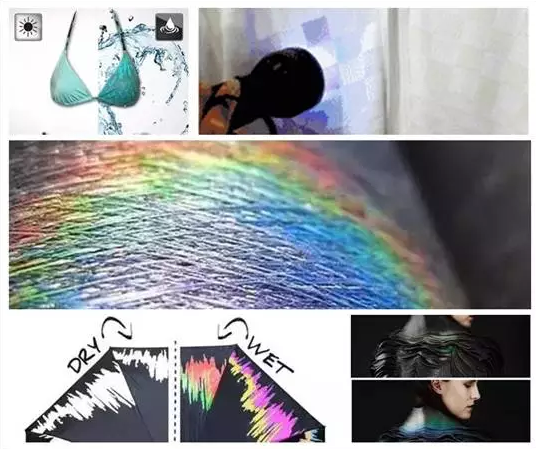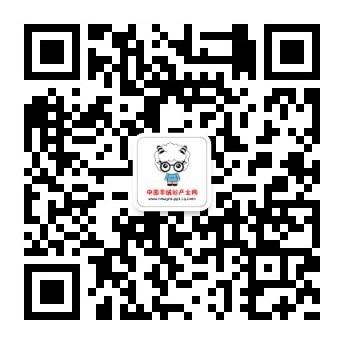The five most popular textiles in the textile industry, how can you not know?
Smart textiles are undoubtedly an important feature of textile development in the future and will become part of people’s daily lives. They represent a wide variety of fabrics and clothing. Its intelligence comes from the special ingredients added to the fabric. These components can be electronic devices, special construction polymers or even colorants.
Click to buy cashmere sweater
Many textiles are designed to compensate for bad conditions in the environment and provide better protection. For example, many innovative fabrics have provided additional adjustments under hot or cold conditions. Other types of smart textiles include electronic devices that are widely used for convenience or safety purposes. These textiles have become increasingly important in the fashion industry.

Broadly speaking, smart textiles refer to textiles, electronics, chemistry, biology, medicine, and other multidisciplinary knowledge developed with a high degree of intelligence in textiles. It is based on the concept of bionics and can simulate life systems. It also has dual perceptions and responses. Features. Smart textiles in the narrow sense refer to electronic information and intelligent textiles. It integrates microelectronics, information, and computer technologies into textiles.
Smart textiles are mainly divided into the following categories:
1. Smart thermostat textiles
Phase change materials are substances that can absorb or release potential heat from the environment on their own reversible phase change within a certain temperature range. Using this characteristic of phase change materials, thermoregulated textiles with intelligent temperature control and health care properties can be developed.
Click to buy cashmere sweater
This kind of intelligent textile can freely adjust the internal temperature of the textile within a certain temperature range according to the change of the external environment temperature. That is, when the ambient temperature increases, the phase change material absorbs heat, melts, and stores heat; when the outside temperature drops. The phase change material radiates heat and condenses to release heat, so that the internal temperature of the textile is relatively stable. Its characteristics make it have a wide range of application value.
2. Shape memory textiles
Shape memory textiles are a type of material that incorporates shape memory functionality into a textile by weaving or finishing. Under the external conditions of temperature, mechanical force, light, pH, etc., it has textiles with excellent properties such as shape memory, high deformation recovery, good shock resistance and adaptability.
For example, Italian Corpo Nove designed a "lazy shirt." Nickel, titanium, and nylon fibers are added to the shirt fabric to give it a "shape memory function." When the outside air temperature is high, the sleeves of the shirt will automatically roll from the wrist to the elbow within a few seconds; when the temperature drops, the sleeve can automatically recover. Shape memory fabrics can be developed into protective clothing and accessories with different functions. With the deepening of the research on shape memory materials and the further improvement of textile processing technology, textiles with shape memory function will be more developed.
Click to buy cashmere sweater
3. Waterproof and moisture-permeable textiles
Water-proof and moisture-permeable fabrics are also called waterproof breathable fabrics, also known as "breathable fabrics" in foreign countries. It is a functional fabric that combines waterproof, moisture permeable, windproof and thermal properties. This fabric can not only meet the wearing needs of people in the harsh environment such as severe rain, snow, and windy weather. It also applies to the requirements of people's daily life on raincoats, and has broad prospects for development.
Water-proof and moisture-permeable fabrics can be obtained by the following ways: weaving water-responsive polymers into the fabric in the form of fibers; and applying waterproof and moisture-permeable polymers such as neoprene, polyvinyl chloride, polyurethane, etc. The layers are finished on the fabric surface; various waterproof and moisture-permeable ultra-high density fabrics made of microfibers are used. In addition, research on the preparation of waterproof and moisture-permeable fabrics by magnetron sputtering and the use of nanotechnology to increase the water resistance of fabrics are underway.
4. Color changing textiles
Color-changing textiles are textiles that can show different shades depending on changes in external environmental conditions (light, temperature, pressure, etc.). Due to its unique properties, color-changing textiles are widely used in various fields. Civil use can be used to make fashionable color-changing garments and ever-changing decorative fabrics. Military use can be used in military camouflage. The field of anti-counterfeiting can be used as anti-counterfeit materials and is widely used in bills, certificates and trademarks.
Click to buy cashmere sweater
Color-changing textiles can be obtained by the following three methods: the addition of color-changing fibers to the fabric; the use of color-change dyes; and the use of color-changing coatings for printing. In the three methods, the research and development of color-changing fiber technology is slightly later, but its advantages are most prominent. The fabric made from it has good hand feeling, good washing resistance, and long lasting color effect.
5. Electronic Information Smart Textiles
Electronic information Smart textiles are an important part of smart textiles. Initially, it mainly installed some electronic components on textiles, such as “wearable computersâ€, and was mainly used in important fields such as medical, military, and aviation.
With the continuous development of cross-discipline in the field of electronic information technology and smart textiles. Electronic information and intelligent textiles have developed rapidly, expanding from the former military and aeronautical fields to the living areas, bringing more convenience to people's lives.
Click to buy cashmere sweater
Conclusion:
The design and development of smart textiles has made people see the hope and future of the textile industry. In the future, more stylish and personalized smart textiles will appear in our lives, bringing more convenience to us and satisfying our ever-increasing demand for textiles, adding a colorful touch to our good life.
Want to learn more about cashmere sweater: accessible
Pay attention to WeChat public number "Cashmere sweater industry platform" to learn more about cashmere sweater information

Lurex Knitting Fabric,Lurex Serie Fabric,Custom Jacquard Fabric,Lurex Knitted Jacquard Fabric
Shaoxing City Shenglin Import And Export Co.,Ltd , https://www.shineogroup.com
